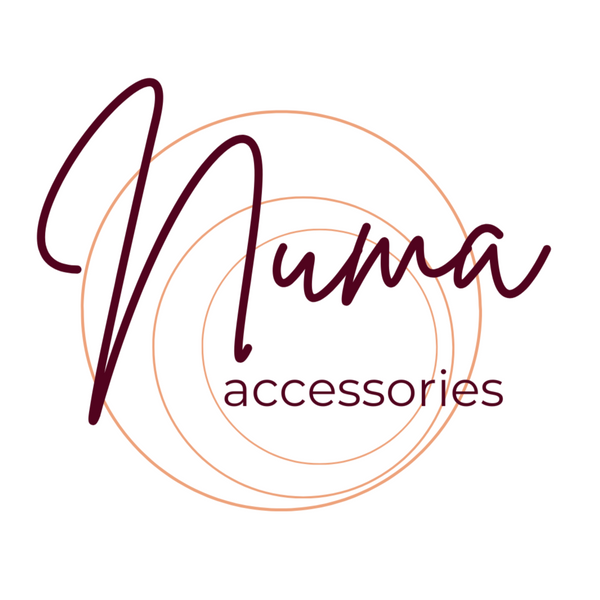
MATERIALS IN JEWELRY: LEARN ABOUT STAINLESS STEEL, SILVER, GOLD AND COPPER - AND FIND THE PERFECT MATERIAL FOR YOU by Maria Nunez
Share
When choosing a piece of jewelry, we often focus first on the design, colors, or stones. But something that is just as important, and that many people don't think about, is the material the jewelry is made of.
Each metal has its own unique properties that affect the durability, appearance, maintenance and, of course, value of the jewelry.
In my workshop I primarily work with high quality stainless steel , combined with gemstones, freshwater pearls and sometimes silver. Therefore, in this article I will put special emphasis on stainless steel, but also talk a little about silver, gold and copper.
💎 Stainless steel: The main material in my jewelry
Stainless steel is a modern, strong and very versatile material that is becoming increasingly popular in both modern and handmade jewelry.
Many people think that all stainless steel is the same – but it is not. The quality and properties depend on the composition, especially the amount of chromium, nickel, carbon and molybdenum.
✨ What makes steel stainless?
It is the chromium content in particular that creates a protective layer on the surface and prevents rust and corrosion. Nickel also adds shine and strengthens the metal's resistance.
🔍 The most commonly used types of stainless steel in jewelry
Here is an overview of the most commonly used steel grades in jewelry production and their composition:
|
Steel type |
Chromium (Cr) |
Nickel (Ni) |
Molybdenum (Mo) |
Carbon (C) |
Properties |
|
304 |
18-20% |
8-10.5% |
- |
≤ 0.08% |
Good resistance to corrosion. Affordable. |
|
304L |
18-20% |
8-12% |
- |
≤ 0.03% |
Low carbon content. Increased resistance to intergranular corrosion. |
|
316 |
16-18% |
10-14% |
2-3% |
≤ 0.08% |
Very high corrosion resistance, even in salt water. |
|
316L |
16-18% |
10-14% |
2-3% |
≤ 0.03% |
Also called surgical steel. Hypoallergenic, extremely durable and ideal for high-quality jewelry. |
✔️ Why do I primarily use 316L steel?
- It is extremely resistant to rust and corrosion – even in humid environments or when in contact with sweat.
- It is considered hypoallergenic because, although it contains nickel, the nickel is so stabilized that it is not released and therefore does not cause allergic reactions for the vast majority of people.
- It is very durable, does not lose shape and retains its shine with minimal maintenance.
- It is a sustainable choice because it is 100% recyclable.
Therefore, it is perfect for jewelry that can be worn every day – without worrying about wear or discoloration.
🩶 Silver: Timeless elegance and beautiful shine
Silver is one of the most classic materials in the world of jewelry. Its bright shine and soft expression make it an obvious choice for elegant and versatile jewelry.
🔍 The most common types of silver:
- Fine silver (999): 99.9% pure silver. Very soft, rarely used for everyday jewelry.
- Sterling silver (925): 92.5% silver + 7.5% copper. The most commonly used silver because it combines strength and beauty.
- Silver 950: 95% silver. Slightly purer, but more delicate.
✔️ Benefits:
- Beautiful, noble and shiny metal.
- Easy to clean and maintain.
- More affordable than gold.
⚠️ Disadvantages:
- May oxidize (darken) over time, but this can be easily polished away.
✨ Gold: Luxury, tradition and durability
Gold is the symbol of value, strength and timeless beauty.
🔍 Types by purity:
- 24 carat: 99.9% pure gold. Very soft.
- 18 karat: 75% gold + 25% other metals. The most commonly used for jewelry – perfect balance between purity and strength.
- 14 carat: 58.5% gold. More robust and affordable.
- 9 karat: 37.5% gold. Very durable and economical, but has a lower gold content.
🎨 Colors:
- Yellow, white or rose gold , depending on the alloy.
✔️ Benefits:
- Does not tarnish and does not lose its color.
- Incredibly durable and valuable.
⚠️ Disadvantages:
- High price.
- White gold may contain nickel if it is not plated with rhodium.
🧡 Copper: Warm and rustic look
Copper is widely used in crafts and bohemian-inspired jewelry thanks to its warm color and easy malleability.
✔️ Benefits:
- Affordable.
- Easy to shape.
- Unique, warm color.
⚠️ Disadvantages:
- Oxidizes quickly and can develop a green patina.
- May discolor the skin in some cases.
💡 Comparison of metals in jewelry:
|
Metal |
Price |
Durability |
Allergy-friendly |
Maintenance |
Oxidizes |
|
Stainless steel (316L) |
Low |
Very high |
Very high |
Very low |
No |
|
Sterling silver (925) |
Medium |
Medium |
High |
Medium |
Yes |
|
Gold (18k) |
High |
High |
Very high |
Low |
No |
|
Copper |
Low |
Medium |
Medium |
High |
Yes |
💖 Conclusion:
Each metal has its own charm, strengths and beauty. Stainless steel 316L , which is the material I primarily work with, is ideal for those who want jewelry that is beautiful, strong, affordable and sustainable.
In my workshop, I combine stainless steel with gemstones, freshwater pearls, and sometimes silver to create unique jewelry that can be worn every day – jewelry that is both durable, comfortable, and filled with meaning.
If you enjoyed this article, I invite you to continue learning more about my processes, materials, and designs by joining the Blog Followers Club for free and get 20% off your first purchase. You can join here:
https://subscribepage.io/eswoRy
